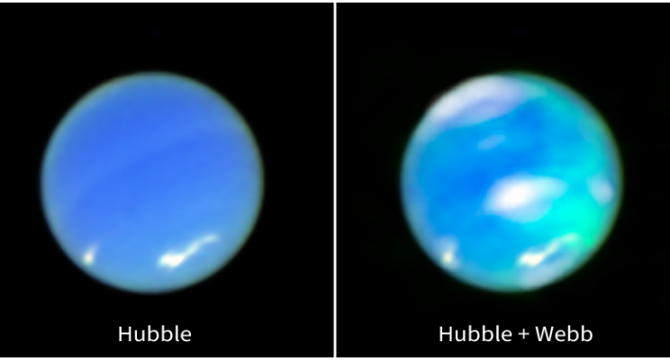Earthsky
1w
162

Image Credit: Earthsky
See auroras on Neptune for the first time!
- The Webb space telescope has captured auroras on Neptune for the first time, showing a bright auroral glow on the ice giant.
- Neptune, located about 3 billion miles away from the sun, has been a challenging target for astronomers to observe due to its distance and cold environment.
- Auroras on Neptune are created by energetic particles trapped in its magnetic field, which collide with the upper atmosphere, releasing energy and creating the signature glow.
- The detection of auroras on Neptune was made possible by Webb's near-infrared sensitivity, providing clear and detailed images of the phenomenon.
- Neptune's auroras are different from those on Earth, Jupiter, and Saturn, as they occur at the planet's mid-latitudes rather than at the poles.
- The presence of the trihydrogen cation (H3+) in Neptune's atmosphere confirms the existence of auroral activity, with glowing auroras appearing as cyan splotches in the Webb images.
- Neptune's magnetic field, which tilts at 47 degrees from its rotation axis, plays a significant role in the distribution of auroras at the planet's mid-latitudes.
- Astronomers discovered a substantial cooling in Neptune's upper atmosphere since the Voyager 2 flyby in 1989, leading to fainter auroras and explaining why they were previously undetected.
- The findings from the Webb observations suggest insights into Neptune's magnetic field dynamics and temperature changes, providing valuable information for future studies of the ice giant.
- By studying Neptune over a full solar cycle, astronomers aim to unravel the mysteries of its magnetic field origin and tilt, paving the way for future missions to explore Uranus and Neptune.
Read Full Article
9 Likes
For uninterrupted reading, download the app